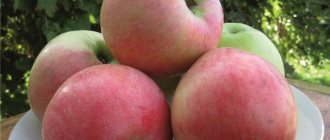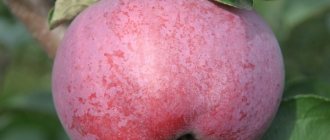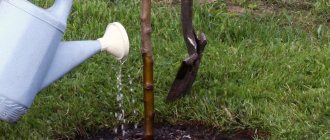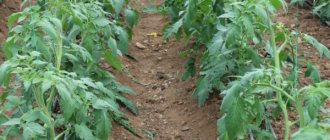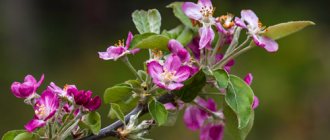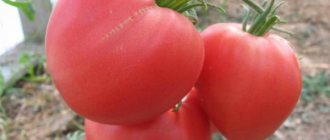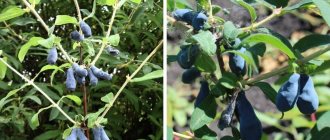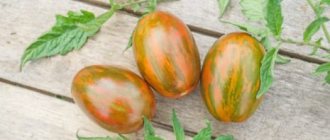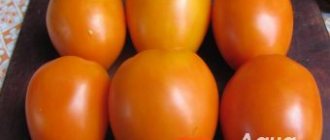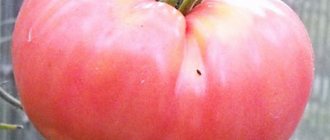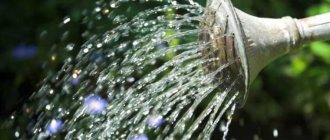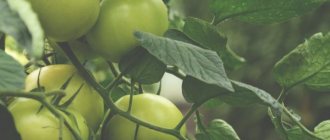The Silver Hoof apple tree is a summer variety and is the most popular among gardeners.
In the early 90s of the twentieth century, this variety was zoned to the West Siberian regions.
Very often this apple tree is found in the northern regions of Kazakhstan and Udmurtia, in the Kirov, Chelyabinsk and Perm regions.
The Silver Hoof apple tree variety is quite winter-hardy, which is why it is valued in the northern regions.
For beginning gardeners, in order to avoid mistakes when growing, you should familiarize yourself with this variety in more detail.
Description
This culture was bred in the Yekaterinburg nursery by breeders L.A. Kotov. when crossing Rainbow and Snowflake apple trees.
Tracing the stages of the pedigree form, it can be revealed that this variety came from many crosses of the Russian Siberian berry apple tree with large varieties of apple trees from the northern zone.
The variety is quite winter-hardy, with early fruiting . Not very picky about weather conditions, has tasty fruits.
Fruiting of the Silver Hoof apple tree.
additional characteristics
Silver hoof is a summer, very productive apple tree variety .
This fruit crop is distinguished by the following advantages:
- Frost resistance;
- Drought resistance;
- Fruit storage for up to 2 months.
The disadvantages of this variety include:
- With poor care, the fruits become smaller;
- Affected by scab;
- Fruit rot is allowed.
Attention! Silver hoof requires regular care.
Tree height
The Silver Hoof apple tree is slightly shorter or of medium height.
The height of the tree reaches no more than 3 - 4 meters.
Crown width
- The crown of the fruit crop is thick and round .
- Skeletal branches: Straight,
- They have a compact arrangement and grow at a 90 degree angle to the base of the trunk.
- Short pointed,
Productivity
The variety has high stable yield .
Every year the tree produces the same number of fruits.
Apples have an average weight of about 85 grams . The yield per tree reaches 160 kg.
Important! If agricultural practices are violated, the yield of the apple tree decreases.
Self-fertility
Silver hoof is a self-sterile crop. To set fruit, it requires pollination from other varieties of apple trees.
Tasting assessment
The apple pulp has a fine-grained consistency, quite firm and juicy. They have an aromatic and rich sweet and sour taste. Apples contain: sucrose, ascorbic acid, P - active substances and titratable acids.
Winter hardiness
The variety is considered winter-hardy. Thanks to this, the fruit crop grows well in a continental climate.
Disease resistance
The apple tree is moderately resistant to diseases. There are often cases of scab and diseases caused by microorganisms of fungal origin.
Diseases and pests
This crop has an average degree of resistance to fungal diseases, and therefore requires preventive treatment. In early spring and late autumn after leaf fall, the crown and tree trunk area are irrigated with a solution of copper, iron sulfate or Bordeaux mixture. They monitor the condition of the above-ground part - diseased and rotten places are cut out in a timely manner. On the eve of autumn frosts, treat the lower part of the trunk and the base of skeletal branches with slaked lime.
Depending on the type of infection, different methods of treating the tree are used:
- Fruit rot. Leads to rotting and massive shedding of fruits. Treat the crown with a solution of fungicide Khom - 40 g dissolved in 10 liters of water. Treatment is carried out twice - before the swelling of the vegetative buds, after flowering.
- The same phenomenon can be observed when an apple tree is infected with the codling moth. The caterpillars of the pest cause great damage to the tree. They overwinter under the bark, and with the onset of warm days they crawl out, gnaw holes in the young growth, and eat the pulp of fruits from the inside. You can get rid of parasites using chlorophos or metaphos.
- Powdery mildew. This is a fungal infection that damages all organs - leaves, buds, stems and bark. You can identify it by a whitish coating in the form of flour. Over time, the affected areas darken and die. The fight against the fungus begins in early spring before the start of sap flow - the crown and soil are treated with Bordeaux mixture (1%), Skor or Hom.
- Scab. Due to frequent and heavy precipitation and fog, light green spots appear on the upper side of the leaves. Over time, the infection spreads to the fruits - they become covered with black spots and become deformed. To preserve the harvest, the tree is sprayed with Zircon, Skor or Vectra. For prevention, you need to remove weeds and fallen leaves in a timely manner and dig up the garden every fall.
- Aphid. This insect settles in colonies on the underside of leaves and multiplies quickly. It feeds on the juice of young organs, which leads to their wrinkling, yellowing and drying out. To get rid of the parasite, it is necessary every spring (before the beginning of the growing season) to irrigate the crown with 3% concentration of karbofos. If you did not have time to do this before the buds burst, then use a 2% solution. You can replace karbofos with phosphamide, zolone or actara.
Reviews
Altai region. Pozdnyaeva R.I.: “The state farm where we live collapsed back in the 90s. We had a rich fruit garden with various varieties of apples, pears, plums and other crops, the collection of which had to be paid during Soviet times. For many years now, this garden has been abandoned; many fruit crops have lost their fruiting and stand like ordinary trees.
My husband and I come to this garden every year to pick apples and sea buckthorn. I would like to highlight the Silver Hoof apple tree variety.
I am not a gardener and I don’t know how this apple tree should bear fruit, but we harvest from this tree year after year.
I won’t say that the apple tree has a lot of fruits, but they are very tasty both fresh and canned .
The storage of apples is quite long ; they begin to deteriorate only 1.5 months after picking. Apples are very good when dried; I add them to baked goods in winter and make a very tasty compote.”
Maksimov. D. Kiev: “Hello! I am a beginner gardener; I have been mastering this science for about 6 years. And this is what I can say from initial experience. Everyone praises the Silver Hoof apple tree variety, but I refute this opinion. I purchased a seedling not at some market, but at a breeding institute , after looking at the photo and description of the variety. And now I’ve been waiting for this apple tree to bear fruit for 6 years. The apple tree bloomed for the first time last year, there were no fruit buds. This year it bloomed again and again the fruits did not set, although pollinating varieties grow nearby.
Constantly exposed to diseases and pests. I carry out pruning according to technology. Tolerates winter well. If I don’t get fruit again next year, the apple tree will have to be cut down.”
Maksaev. M.I. Sterlitamak: “I love my country garden, where only apple trees grow. I have been growing this crop for more than 15 years. About 20 different varieties grow on my site, such as:
- Persian,
- Gornoaltaiskoe,
- Uralets,
- Silver hoof, etc.
I planted them in a checkerboard pattern, at a distance of 5 meters. From the beginning of spring to autumn, you have to spend a lot of time in your dacha, since some varieties of apple trees are demanding to care for.
Despite the fact that Silver Hoof is one of these varieties, I really fell in love with the apple tree from the moment I looked at the description and photo before purchasing the seedling.
There have never been any problems with flowering and fruit set. The growth of the apple tree is average. Fruiting is annual . I am satisfied with the quality of the fruit. It tolerates the winter period quite well. In spring, there are quite a few dead branches observed.”
Features of planting and care
Planting an apple tree Silver Hoof.
The first yield and its stability depend on proper planting and care of the plant.
Landing
Deadlines
An apple tree can be planted during three seasons:
- In spring, in April,
- In summer, at the end of July,
- autumn, early October.
However, gardeners still recommend planting in the fall.
Place
The plant prefers light, loose soil . The planting site should be well lit and free of groundwater.
Technology
For planting, dig a hole 60 cm deep and about 70 cm in diameter.
Add to the bottom of the pit:
- 4 kg of humus,
- 40 gr. superphosphate,
- 20 gr. urea and potassium.
- Then soil is poured onto the fertilizer, a tubercle is formed and a seedling is placed on it.
The tree is attached to a support peg and carefully covered with earth. After planting, the seedling is watered abundantly until the water is absorbed into the soil.
Important! When planting a seedling, contact of rhizomes and fertilizers is not allowed , otherwise the tree may get burned.
Agricultural technology
Treat the tree with fungicides and insecticides several times a season :
- Before leaves begin to form,
- Then through the green mass and before flowering begins.
The fruit crop needs abundant watering during drought and during fruit ripening.
The tree trunk circle is mulched with organic material .
is fed with nitrogen, potassium and phosphorus fertilizers.
Pruning and crown formation
The yield depends on how excess branches are cut and the crown is formed.
The first pruning is carried out in early spring of the next year after planting. The branches are trimmed to the maximum, leaving the trunk open.
In subsequent years, preventive pruning is carried out and the lower tiers of the apple tree are not allowed to become overgrown.
In Siberia
To obtain an abundant and large harvest of Silver Hoof in Siberia, the variety is grown in slate form.
Thanks to which the branches are under the snow and are not damaged by frost.
Pollinator varieties
Different varieties of this crop will serve as pollinators for the apple tree ; the most important thing is that they bloom and bear fruit in the same period.
Although gardeners believe that the best variety for pollination is the Anis Sverdlovsky apple tree.
Feeding in autumn
In autumn, the apple tree is fed with rotted manure or compost .
They are added to the soil and, together with the soil, carefully piled up near the tree trunk. Fresh organic matter is not used, as it can cause burns to the roots of the plant.
Transfer
Transplantation is carried out in the fall a month before frost. The apple tree should be at rest after all the leaves have fallen.
Advice! If you are replanting a tree with foliage, the work process must be carried out in the evening.
Reproduction methods
Apple tree (grafting with cuttings).
The Silver Hoof variety can reproduce in different ways:
- Grafting a cutting;
- Kidney vaccination;
- Rooting cuttings;
- Seeds.
This variety is also valued by breeders due to the fact that it is involved in the development of new elite varieties through crossing.
Reproduction methods
Several propagation methods are used for this variety, each with a specific technology.
Seeds
Typically this method is used to develop a new variety or hybrid form. The procedure is quite complicated. The seeds are taken from seasonally ripe apples and washed with warm water. Before planting, they are stratified - mixed with wet sand and placed in a closed container in the refrigerator for 1.5 months.
Sow the seeds in spring in furrows to a depth of 3-4 cm at a distance of 20 cm. Sprinkle with a thin layer of peat and sand.
As they grow, bad seedlings are discarded, good ones are regularly moistened with warm water. After a year of cultivation, they are planted on the site. Before planting, it is necessary to pinch the central root to stimulate the development of new shoots. Further care is the same as for purchased seedlings.
Cuttings
Young trees are suitable for cuttings
For such propagation, root shoots are used. They take cuttings from young trees, because shoots from old ones take root less well. They are harvested in early spring before the leaves begin to bloom. The soil is watered abundantly, the cuttings are carefully dug in and removed along with the roots.
Plant in pre-prepared trenches so that the root is completely immersed in the ground. Further care of the seedlings is not difficult - they are regularly moistened and then mulched with peat. At the end of summer they are planted in the garden according to the pattern - 3x2 m.
Grafting with cuttings
Choose wild game grown from seed or sprouted independently. On a varietal tree, a young one-year-old shoot with a heel (a piece of old wood) is cut. A T-shaped cut is made on a wild apple tree. The lignified part of the cutting is inserted into it so that the tissues of the scion and rootstock fit tightly to each other.
The grafting site is wrapped with special tape to prevent air from getting inside.
After 2-3 months, the cutting should take root - this can be determined by the new leaves on its surface. Then the winding is removed.
Features of ripening and fruiting
Beginning of fruiting
The first fruiting of the apple tree occurs 3 years after planting.
Better quality fruits with high rates are observed two years after the first fruiting.
Deadlines
Blooms
The flowering period of the Silver Hoof occurs at the beginning of May.
The tree has white flowers of medium to large size.
The shape of the petals is semi-closed.
Fruit ripening
The ripening period for fruits in the Sverdlovsk region is at the end of August .
In the western and eastern regions located from the Urals, the fruits ripen much earlier .
If the fruits are not picked in August, they become translucent in September .
Peculiarities
The Silver Hoof variety has the following fruiting characteristics:
- Early fruiting;
- Harvest stability;
- Very good taste;
- Presentation of apples;
- Long-term storage of fruits.
Important! During transportation, the fruits do not lose their appearance. After 2 months of storage, the fruits remain juicy and tasty.
What to do if the apple tree does not bloom or bear fruit?
Beginning gardeners make mistakes when planting and processing apple trees, which ultimately leads to the tree not blooming or bearing fruit.
Flowers do not set on a tree for the following reason:
- Early - perhaps the tree has not reached fruiting age.
- When the crown is processed incorrectly, when fruit branches are cut off by mistake.
- The color of the apple tree stops in the presence of the flower beetle pest.
If, nevertheless, the apple tree blooms profusely, but no fruits are formed on it, the following factors should be taken into account:
- When harvesting is not done carefully, short branches called fruits break.
- Frosts during apple tree flowering reduce fruit development.
- Lack of pollinator varieties for the plant or incorrect choice.
If these nuances are observed, the apple trees will begin to bear fruit on time.
Growing in regions
Moscow region
The climate in the Moscow region has the following characteristics:
- The severity of winter,
- Dry summer
- Short vegetative period of plants.
Not every variety will take root in these conditions with annual, stable fruiting. Thanks to repeated selections, the Silver Hoof variety not only takes root in these weather conditions, but also produces a harvest with increased consumer qualities .
Important! During dry periods, regular watering is necessary.
Ural
A very popular variety for the Urals is the early Silver Hoof apple tree. A tree with a well-formed crown and medium growth vigor.
The advantages of this variety are:
- Winter hardiness,
- Early fruiting
- High fruit yield.
Apple tree Silver Hoof in the garden.
Volga region
For this region, apple tree varieties with the following characteristics are needed:
- drought resistance,
- Winter hardiness,
- High yield,
- Stable fruiting.
Considering the qualities of the variety, Silver Hoof fits these characteristics perfectly. However, it should be borne in mind that apple trees in this region are most often subject to powdery mildew and scab.
Apple scab.
North-West
The weather in the North-West is unpredictable, frosts are sharply replaced by warm temperatures. For this climate, gardeners are more careful in choosing apple tree varieties.
The variety should be early ripening and, at the same time, quite winter-hardy.
Silver hoof grows well in this area when grown by seed .
During growth and development the seedling requires careful care , otherwise frosts and sudden cold snaps can have a detrimental effect on the plant.
Siberia
The silver hoof was bred by crossing:
- Early fruiting variety Rainbow
- And the autumn variety Snowflake.
This crop combination is well suited to Siberia .
When growing apple trees in this region, frosts of up to 50 degrees should be taken into account .
In such severe weather, the upper branches may die. To avoid this, the tree is planted on a dwarf rootstock or a slate-shaped crown is formed.
Collection and storage
The fruits of this variety have a short shelf life - about 2-2.5 months. To preserve their marketability and taste, they need to be placed in dry containers (wooden boxes or cardboard boxes) and placed in a basement or cellar. The main conditions for preservation are the absence of sunlight, a humidity level of 90%, good ventilation and a temperature within 1-3°C.
Thanks to their dense surface, silver hoof apples tolerate long-distance transportation well.
